| Original Article | 
|  |
New bisnorsesquiterpene from Glottiphyllum linguiforme and its antimicrobial, cytotoxic, and antioxidant activitiesHayam S. Ahmed, Dalia El Amir, Hasan M. H. Muhaisen, Mohamed Sebak, Tamer M. Abdelghany, Abeer H. Elmaidomy, Elham Amin, Asmaa I. Owis, Mohamed A. A. Orabi, Naglaa Afifi. Abstract | | | | Natural product research is a cornerstone in the drug discovery process. Many inspiring chemical moieties with new skeletons and potent biological activity are commonly reported from natural sources. Chromatographic examination of the alcoholic extract of Glottiphyllum linguiforme aerial furnished four compounds, including β-sitosterol (1), β-sitosterol-3-O-β-D-glucopyranoside (2), and 1,1′ biuracil (3), and a new compound, tectoionyl A 3-O-sodium sulfate (4). The new structure was elucidated using high-resolution mass and intensive 1D and 2D NMR spectroscopic analyses. Quantitative analysis of G. linguiforme extract revealed considerable contents of total phenolic and total flavonoid. A DPPH antioxidant assay indicated moderate activity (0.026 mg acid equivalent antioxidant capacity/g dry extract). Antimicrobial activity testing of the pure compounds indicated noticeable antibacterial activity of compound 2 against Escherichia coli, Salmonella enterica, and Pseudomonas aeruginosa. In addition, compounds 1–4 displayed mild cytotoxic effects against human breast adenocarcinoma (MCF7) and hepatocellular carcinoma (HepG2) cell lines, and the normal (Vero) cells at the tested concentration (100 μg/ml), as compared to the standard cytotoxic drug, doxorubicin. This study is the first to estimate phenolics and flavonoid contents, discover constituents by phytochemical isolation, and examine cytotoxicity and antimicrobial properties of G. linguiforme. The unusual nitrogenous compound 1,1′-biuracil (3) and the sulfate derivative (4) may evidence chemotaxonomic importance.
Key words: Glottiphyllum linguiforme; tectoionyl A-3-O-sodium sulfate; antioxidant; antimicrobial; cytotoxicity
|
 Smart Citations Smart CitationsCiting PublicationsSupportingMentioningContrasting See how this article has been cited at scite.ai scite shows how a scientific paper has been cited by providing the context of the citation, a classification describing whether it supports, mentions, or contrasts the cited claim, and a label indicating in which section the citation was made.
13
 | 8
 | 15
 | 9
 | 13
 | 11
 | 18
 | 23
 | 18
 | 25
 | 10
 | | 2024-06 | 2024-07 | 2024-08 | 2024-09 | 2024-10 | 2024-11 | 2024-12 | 2025-01 | 2025-02 | 2025-03 | 2025-04 |
|
|
|
